Front Wheel Drive Tire Rotation Patterns
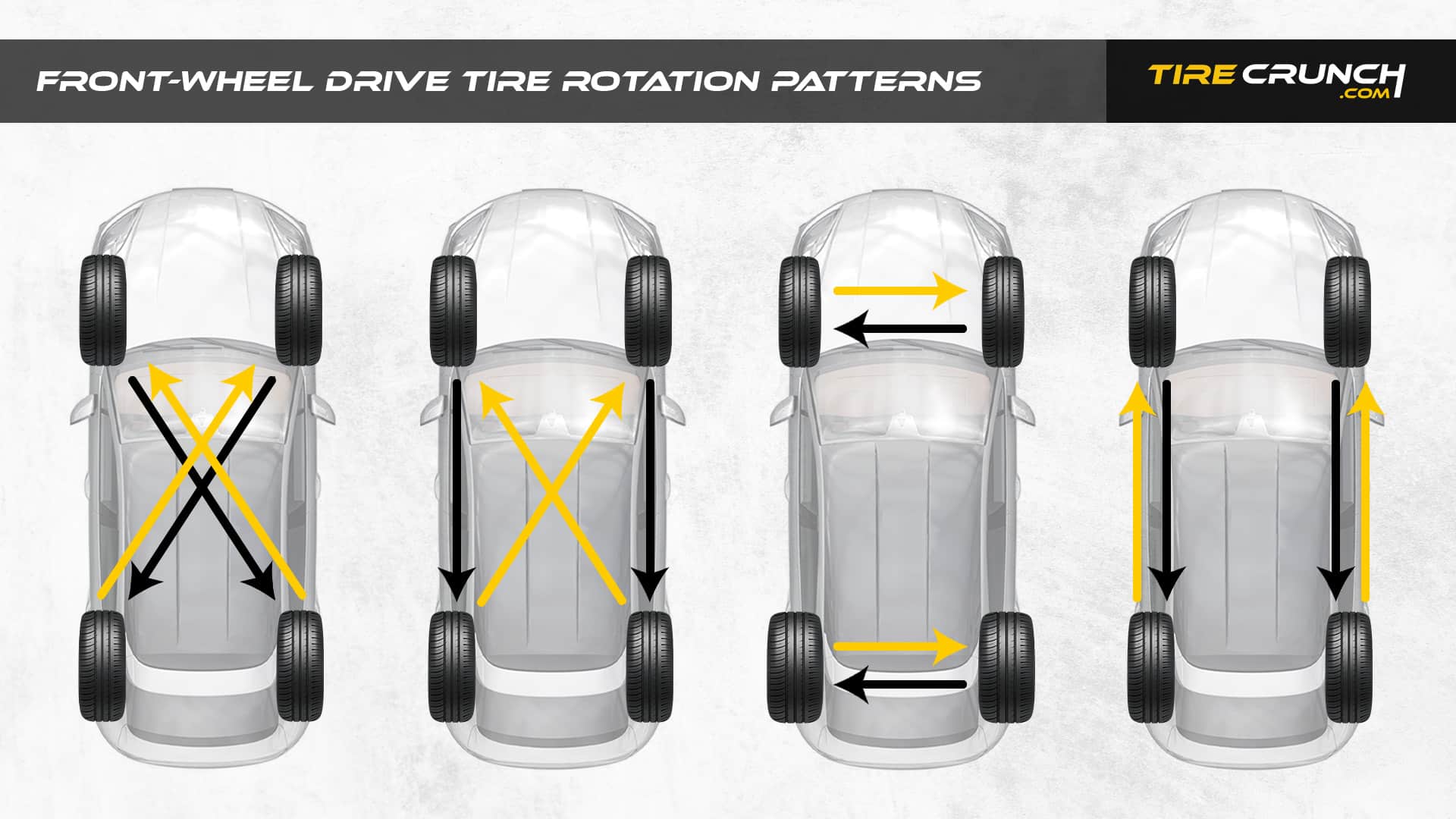
Tire rotation is an important preventative maintenance step that helps to ensure your tires wear evenly. Rotating your tires every 5,000 miles (or more frequently for aggressive, all-terrain or off-road-focused patterns) allows each tire to spend time at each wheel position on the vehicle.
This helps keep the wear even and maintains the vehicle’s proper handling balance while maximizing tire life and tread warranty coverage. Additionally, if your tires wear out as a set, you can replace them all at the same time instead of having to match up an existing pair.
Tire rotations should be done in accordance with the owner’s manual or as established by the tire industry and diagrams can help guide you if necessary.
Important! Before deciding on a tire rotation pattern, it’s important to determine whether your vehicle is equipped with directional or non-directional tires.
Directional vs Non-Directional Tires
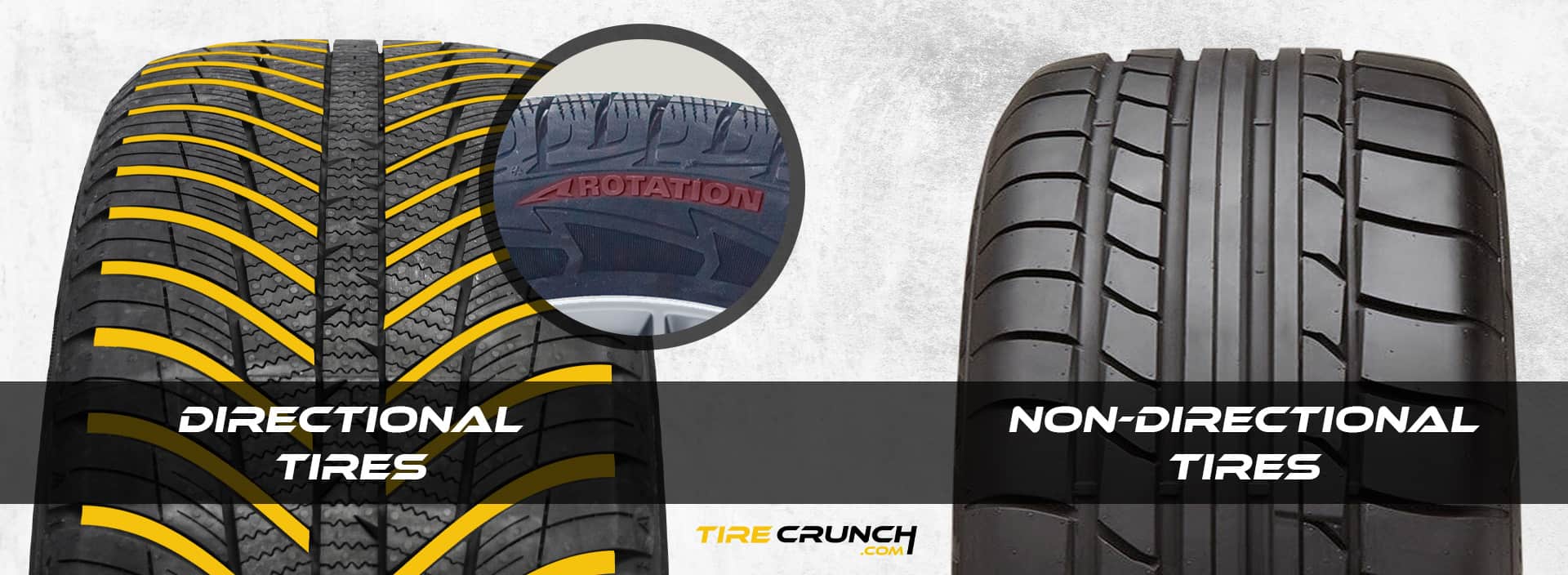
Front Wheel Drive Tire Rotation: Non-Directional Tires
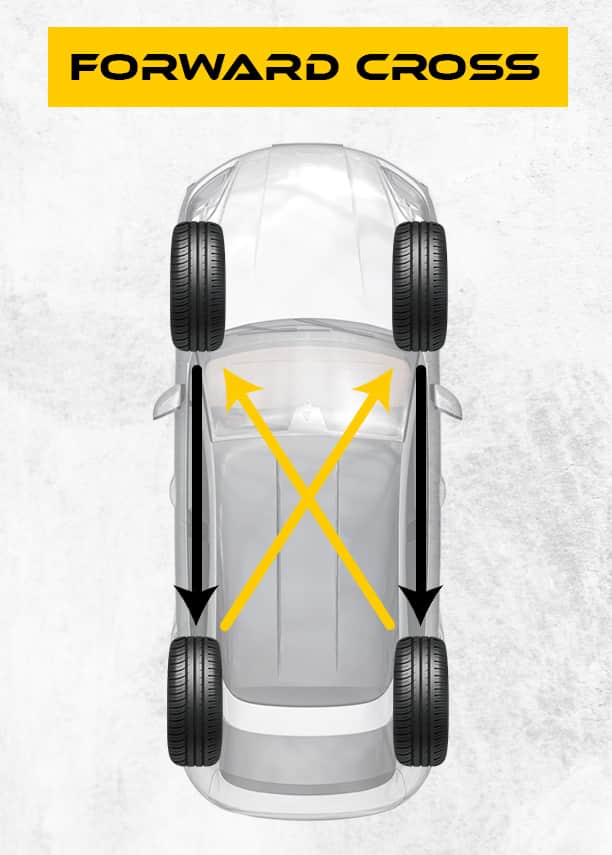
Forward Cross
This pattern involves moving the front axle tires to the back, while the rear tires are moved up diagonally to the opposite side of the front axle.
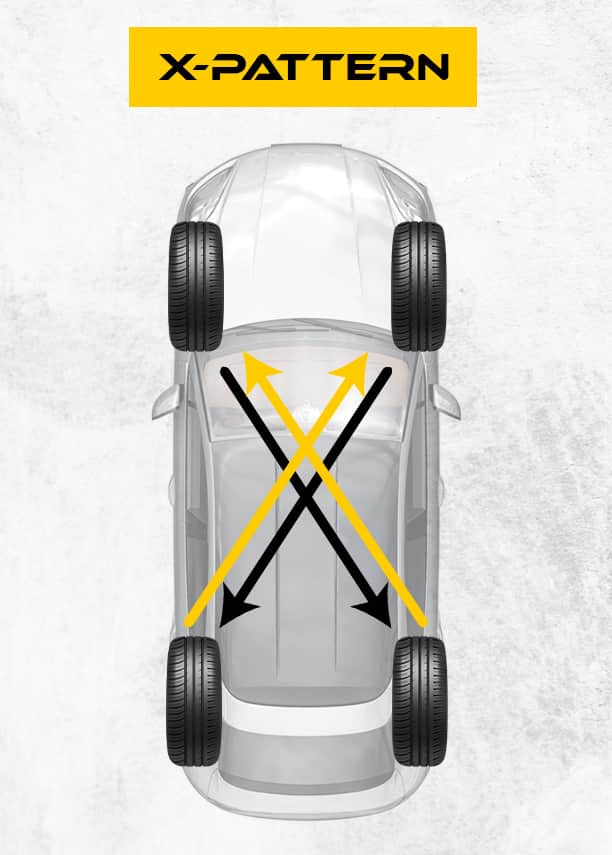
X-Pattern
This pattern involves moving all four tires to opposite axles and sides so that each tire has been moved diagonally from its original position.
Front Wheel Drive Tire Rotation: 5 Tire Rotation
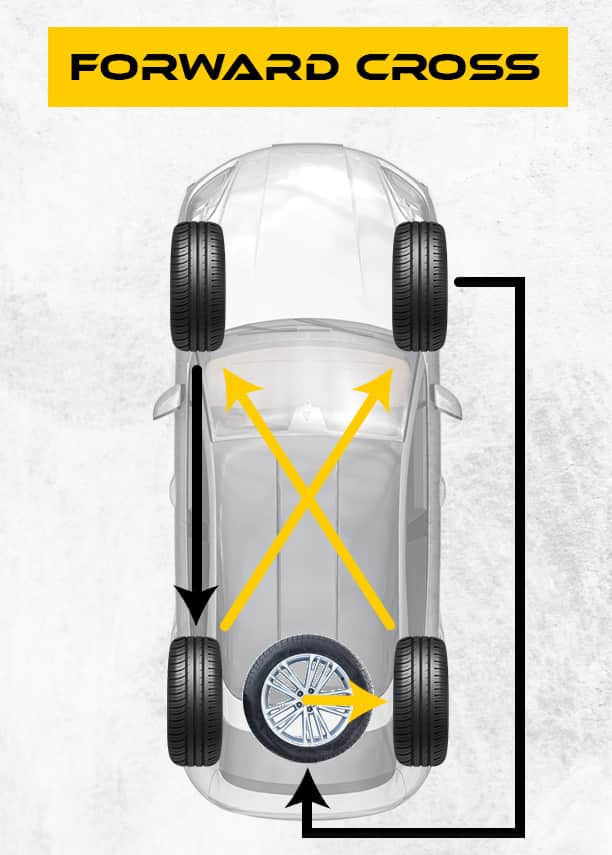
Forward Cross
The two rear tires are moved diagonally to opposite sides on the front axle, with the right front tire becoming the new spare tire. The original spare tire is then repositioned to the right side of the rear axle, while the left front tire is shifted directly back into the left rear position.
Front Wheel Drive Tire Rotation: Directional Tires
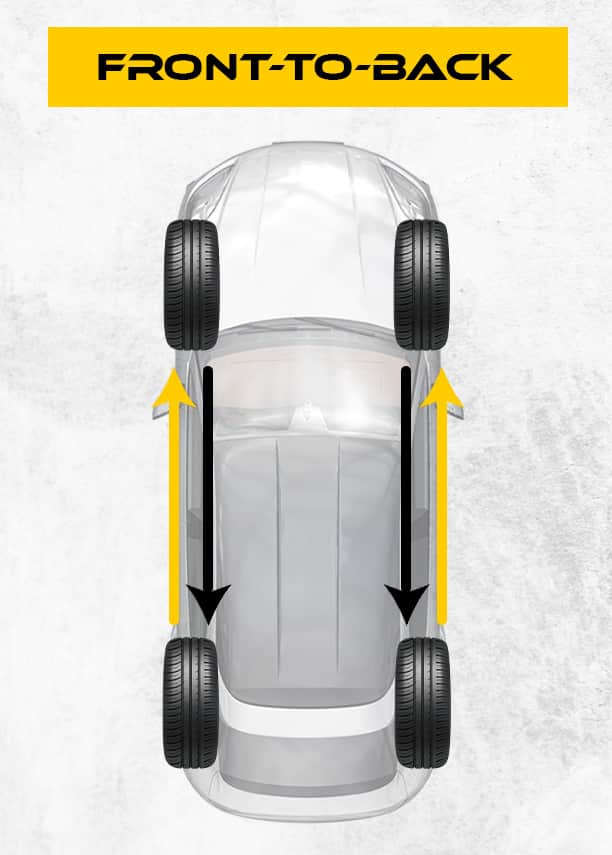
Front-To-Back
The tires are shifted from one axle to another but kept on the same side of the vehicle. The left tire at the front is relocated to the rear left side and the left tire at the back is moved to the front left side.
Differently-Sized Directional Tires
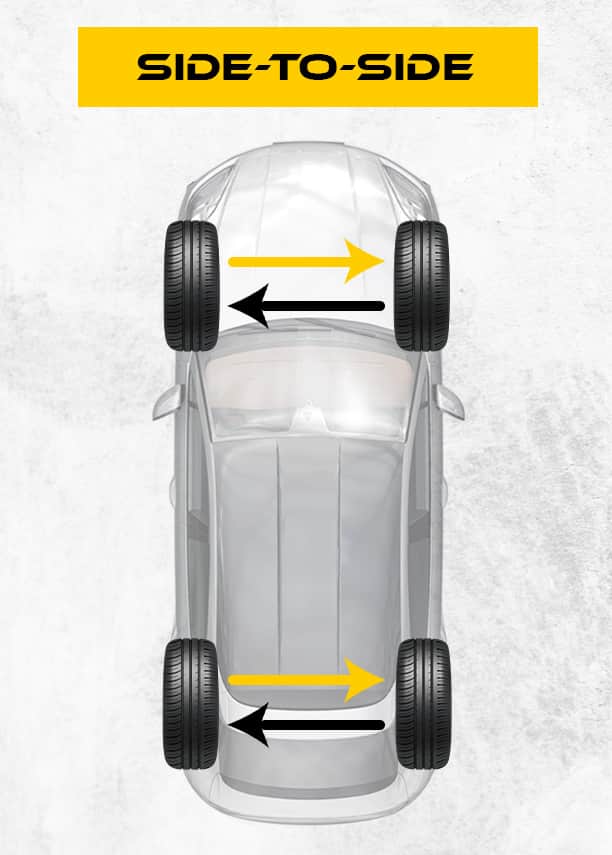
Side-To-Side
The tires must be exchanged with their same-sized companions and stay on the same axle. Both rear tires are switched to the opposite side, as do both front tires.
Why Is Tire Rotation Important?
Tire rotation is an important part of vehicle maintenance that helps ensure the longevity and optimal performance of your tires. Here are some reasons why tire rotation is important:
